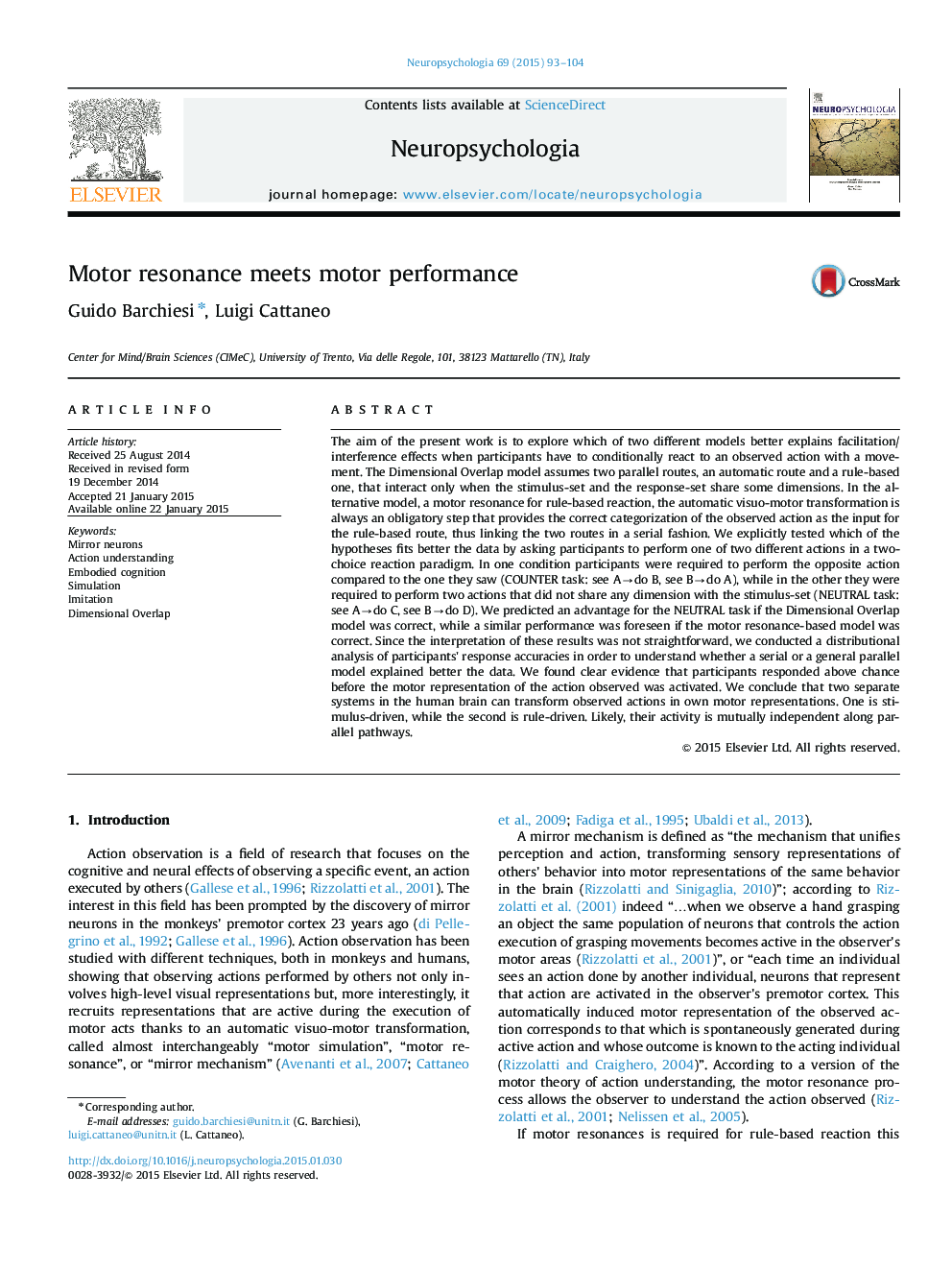| کد مقاله | کد نشریه | سال انتشار | مقاله انگلیسی | نسخه تمام متن |
|---|---|---|---|---|
| 7320362 | 1475584 | 2015 | 12 صفحه PDF | دانلود رایگان |
عنوان انگلیسی مقاله ISI
Motor resonance meets motor performance
ترجمه فارسی عنوان
رانندگی موتور با عملکرد موتور منطبق است
دانلود مقاله + سفارش ترجمه
دانلود مقاله ISI انگلیسی
رایگان برای ایرانیان
کلمات کلیدی
نورونهای آینه، درک عملی شناخت تجمعی، شبیه سازی، تقلید، همپوشانی ابعاد
موضوعات مرتبط
علوم زیستی و بیوفناوری
علم عصب شناسی
علوم اعصاب رفتاری
چکیده انگلیسی
The aim of the present work is to explore which of two different models better explains facilitation/interference effects when participants have to conditionally react to an observed action with a movement. The Dimensional Overlap model assumes two parallel routes, an automatic route and a rule-based one, that interact only when the stimulus-set and the response-set share some dimensions. In the alternative model, a motor resonance for rule-based reaction, the automatic visuo-motor transformation is always an obligatory step that provides the correct categorization of the observed action as the input for the rule-based route, thus linking the two routes in a serial fashion. We explicitly tested which of the hypotheses fits better the data by asking participants to perform one of two different actions in a two-choice reaction paradigm. In one condition participants were required to perform the opposite action compared to the one they saw (COUNTER task: see Aâdo B, see Bâdo A), while in the other they were required to perform two actions that did not share any dimension with the stimulus-set (NEUTRAL task: see Aâdo C, see Bâdo D). We predicted an advantage for the NEUTRAL task if the Dimensional Overlap model was correct, while a similar performance was foreseen if the motor resonance-based model was correct. Since the interpretation of these results was not straightforward, we conducted a distributional analysis of participants' response accuracies in order to understand whether a serial or a general parallel model explained better the data. We found clear evidence that participants responded above chance before the motor representation of the action observed was activated. We conclude that two separate systems in the human brain can transform observed actions in own motor representations. One is stimulus-driven, while the second is rule-driven. Likely, their activity is mutually independent along parallel pathways.
ناشر
Database: Elsevier - ScienceDirect (ساینس دایرکت)
Journal: Neuropsychologia - Volume 69, March 2015, Pages 93-104
Journal: Neuropsychologia - Volume 69, March 2015, Pages 93-104
نویسندگان
Guido Barchiesi, Luigi Cattaneo,
